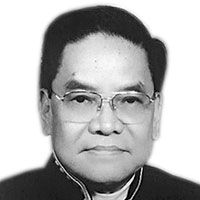Key estrogen receptor gene mutation discovered

December 1, 2002 | 12:00am
A mutant gene that makes estrogen receptors hypersensitive has been identified and it may play an important role in the evolution of invasive breast cancer, investigators reported at the annual breast cancer symposium sponsored by the San Antonio Cancer Institute.
This specific receptor – a mutation has been identified in 20 of 59 (34 percent) hyperplastic breast lesions and 33 of 53 (62 percent) invasive breast cancers assessed to date. The mutation appears to be associated with breast cancers having a worse prognosis. It was detected in 10 to 26 (38) lymph node-negative patients, compared with 23 of 27 (85 percent) who were node positive.
The mutant estrogen receptor – as discovered by scientists appears to be specific to breast lesion that are cancerous or have malignant potential rather than those that are simply hypeproliferative. The mutation hasn’t been found in any of 11 fibroadernomas lesions that are hyperproliferative but not malignant. Nor has the mutation been identified in normal breasts. It appears to arise somatically in breast epithelium. The estrogen receptor – a gene mutation is known as the K303 R mutation. It causes a single amino acid change from lysine to arginine, always at exactly the same location.
Expression of the mutation renders cells markedly hypersensitive to the proliferative effects of even subphysiologic levels of estrogen. It also increases steady stage levels of the estrogen receptor and prevents degradation of the receptor via acetylation. In transgenic mouse studies, expression of the K303R mutation caused hyperplasia in the mammary glands.
In a separate presentation, a professor of medicine at Baylor said that the research group’s working hypothesis is that estrogen receptor activation by the mutation is a permissive event occurring early in breast cancer evolution. It likely provides a proliferative advantage that is clonally selected for during progression.
This specific receptor – a mutation has been identified in 20 of 59 (34 percent) hyperplastic breast lesions and 33 of 53 (62 percent) invasive breast cancers assessed to date. The mutation appears to be associated with breast cancers having a worse prognosis. It was detected in 10 to 26 (38) lymph node-negative patients, compared with 23 of 27 (85 percent) who were node positive.
The mutant estrogen receptor – as discovered by scientists appears to be specific to breast lesion that are cancerous or have malignant potential rather than those that are simply hypeproliferative. The mutation hasn’t been found in any of 11 fibroadernomas lesions that are hyperproliferative but not malignant. Nor has the mutation been identified in normal breasts. It appears to arise somatically in breast epithelium. The estrogen receptor – a gene mutation is known as the K303 R mutation. It causes a single amino acid change from lysine to arginine, always at exactly the same location.
Expression of the mutation renders cells markedly hypersensitive to the proliferative effects of even subphysiologic levels of estrogen. It also increases steady stage levels of the estrogen receptor and prevents degradation of the receptor via acetylation. In transgenic mouse studies, expression of the K303R mutation caused hyperplasia in the mammary glands.
In a separate presentation, a professor of medicine at Baylor said that the research group’s working hypothesis is that estrogen receptor activation by the mutation is a permissive event occurring early in breast cancer evolution. It likely provides a proliferative advantage that is clonally selected for during progression.
BrandSpace Articles
<
>
- Latest
- Trending
Trending
Latest
Trending

By BABE’S EYE VIEW FROM WASHINGTON D.C. | By Ambassador B. Romualdez | 22 hours ago

By FIRST PERSON | By Alex Magno | 1 day ago
Recommended



























